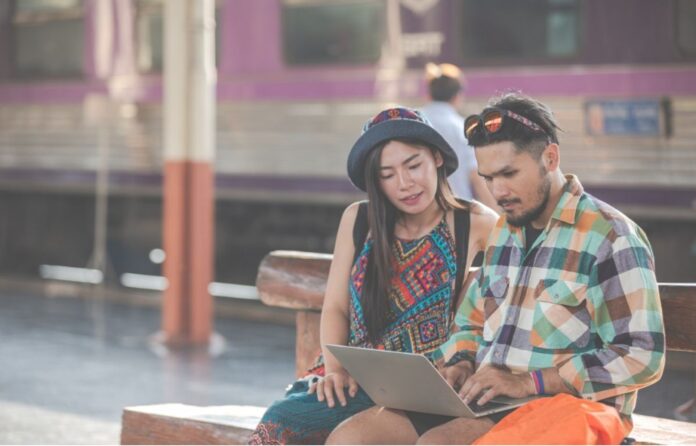Southeast Asia is famous for its vibrant markets, stunning beaches, old temples, and friendly people. All these factors make this continent very attractive for tourists. Travelers from all around the world visit this region to indulge in its beauty, history, and diversity. Visitors don’t merely wish to view the attractions; they want to connect. They are looking to learn the tale of how a festival evolved, what a traditional greeting really signifies, or the little etiquette that makes eating at a family-owned restaurant feel like an exclusive experience.
This is where linguistic and cultural understanding play a vital role. And translation is the bridge that connects these tourists with locals and allows them to understand things about the country they are visiting. Translation bridges worlds. So if a Malaysian native wants to visit Singapore and enjoy its culture, he/she will need translators from a Malay translation agency that will help him/her understand the local culture.
Beyond Words: What Tourists Are Really Looking For
Tourism is not simply about traveling to new countries. It is also about the feelings people bring home when they visit new places. A word-for-word translated brochure can inform a person about a place but cannot convey the reason why certain customs are prevalent in that region. Picture reading about a Thai holiday where the translation is inaccurate. This will ruin the whole experience for foreign visitors. So accurate translations are a fundamental part of enriching a tourist’s stay in a foreign country.
Tourists seek real experiences. They are interested in knowing how things work locally, they wish to eat street food without worrying about offending someone or not knowing anything, and they wish to engage in cultural activities without feeling out of place. This is only attainable when translations are more than grammar and vocabulary and venture into nuances of culture.
Diversity of Languages in Southeast Asia
The Southeast Asian tourism economy is prospering due to the variety of cultures. Thailand, Vietnam, Malaysia, Indonesia, the Philippines, and Singapore all draw millions of tourists annually. Now imagine the number of languages and dialects spoken in these countries. This abundance of languages makes translation an important tool to capture the attention of the tourists. Other than that, translation also gives a reputation to your tourist company.
For instance, a Bali tour operator might wish to appeal to both English-speaking and Mandarin-speaking tourists. The problem is what will appeal to one group won’t appeal to the other. A slogan that is thrilling in English may be boring in Chinese. That’s why cultural accuracy is important. It makes each traveler feel understood and recognized, regardless of origin.
The Small Details That Make a Big Difference
Cultural nuances in translation not only create big-picture messaging but also affect moments of everyday life as well. Consider a hotel welcome brochure. If it only translates the term “welcome” into the local language, it gets the task done on a surface level. But if the brochure is completely translated and tells about a local custom in the language of the tourist, this becomes a more inviting and memorable experience for visitors.
Building Trust Through Culturally Accurate Content
Tourists are more apt to go on tours, dine at restaurants, or lodge at hotels if they trust what they will get. Proper cultural translations provide travelers with that confidence. This is why it is important to accurately translate your websites. In this way, tourists can count on the information they receive to understand things properly without confusion and have a peaceful trip.
Take airport or train station signage. Translation allows tourists to understand places and their directions. On the other hand, if there is any error in those translations, it can misguide foreign visitors. By making certain that the translation is culturally clear, tour operators streamline travel, which makes it more enjoyable. That creates a positive, long-lasting impression, which is essential for places that rely on tourist dollars.
Why Southeast Asia’s Tourism Needs Human Translations
The tourism industry in Southeast Asia is highly famous. Each country is known for specific reasons that attract tourists. There are treasures unique to each country, and travelers have literally thousands of choices. What sets one place apart is how you present a place for your tourists. The way you translate your websites and make tourists’ stay easy in your country speaks about your nation’s culture.
This is the reason why depending only on literal, machine-made translations is dangerous. Machines are improving, but they frequently overlook subtle meaning, cultural nuances, and tone. An investment in cultural accuracy makes the message feel warm.
Indonesian Tourism as an Example
Indonesia consists of many islands and a rich cultural heritage, which make it one of the most visited places. Your tourism campaign would have to appeal to tourists from Japan, Europe, and Australia, all while being respectful to your potential tourists. Here, precise translations are crucial. Also, you need to understand how important Indonesian translations are for these tourists. In order to enter Indonesia, they will need to translate their visa, passports, and other important information into Indonesian using English to Indonesian translation services.
The Role of Reputable Partners in Tourism Development
Tourism boards, airlines, hotels, and online travel platforms in Southeast Asia tend to rely on language partners who know the region intimately. It’s not about translating words; it’s about translating experiences. Specialized agencies such as MarsTranslation assist tourism companies in removing cultural gaps while providing content that inspires international visitors.
Conclusion
At its essence, tourism is human connection. It’s about educating each other, embracing differences, and doing experiences that will enrich both the visitors and hosts. Cultural accuracy in translation facilitates that. It makes the trip a journey worth remembering by turning it into a story.

